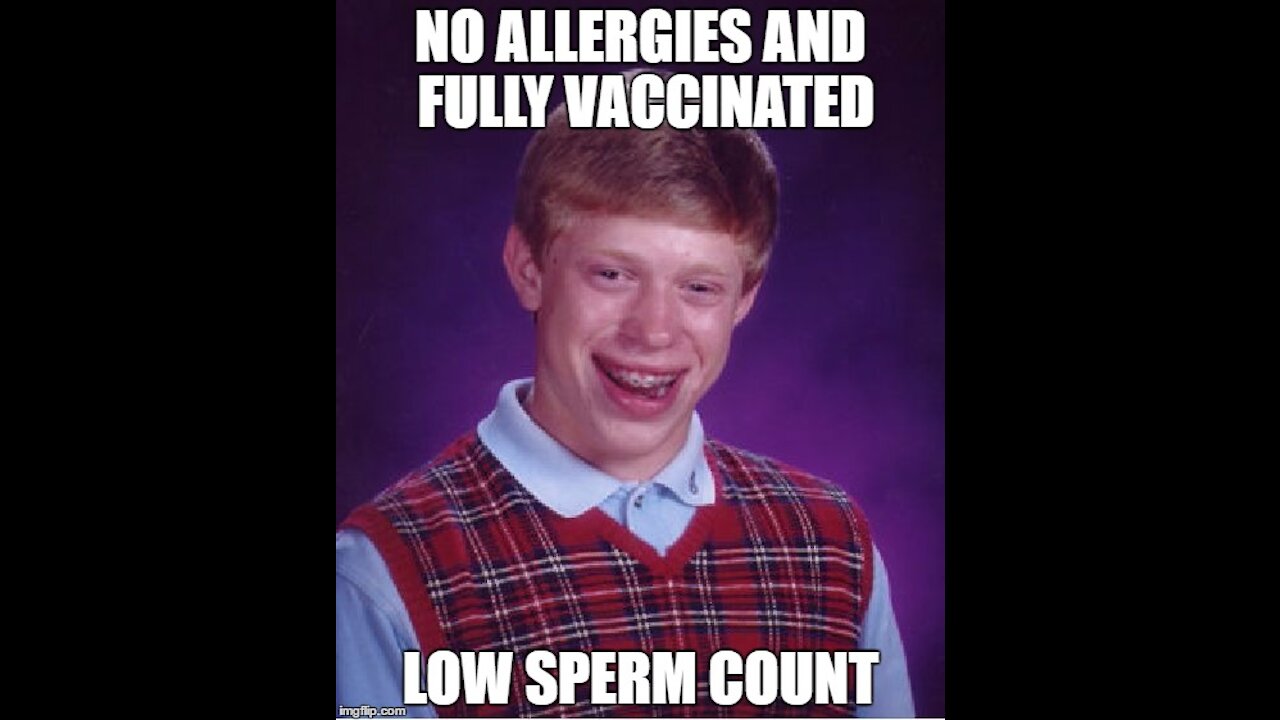Premium Only Content

More than 40% of people will need technological help to reproduce by 2050 one expert predicts, sperm
#Reproduction #Chemicals #SpermCount #Phthalates
Falling sperm counts are a threat to human survival, a leading epidemiologist has warned.
Dr Shanna Swan said the impending fertility crisis is a global threat in her provocative new book, 'Count Down: How Our Modern World Is Threatening Sperm Counts, Altering Male and Female Reproductive Development, and Imperiling the Future of the Human Race'.
Falling sperm counts could be as big a threat as the climate crisis, according to Dr Swan, an environmental and reproductive epidemiologist at Icahn School of Medicine at Mount Sinai in New York.
In the book, she wrote: 'The current state of reproductive affairs can’t continue much longer without threatening human survival.'
She is also the author of a ground-breaking 2017 study that revealed that sperm counts around the world have fallen by more than half over the past four decades.
And all signs suggest the downward trajectory will only continue in the decades to come.
Only about 1.9 percent of all babies born in the US were conceived using artificial reproductive technology.
By 2050, that will change, claims Dr Swan her new book
Dr Swan predicts that by then, a large proportion of people around the world will not be able to conceive without technological assistance.
That will be the result of declining sperm count among men around the world, she says.
There are many drivers of infertility, but Dr Swan has homed in on a sneaky prime suspect: household chemicals called phthalates.
Phthalates are in all manner of products. They make plastics pliable, they make it possible for our skin to absorb lotion and they help make food packaging like cellophane stretchy and air-tight.
But they seep from these packagings into our food and into our bodies where they do something much more insidious, disrupting the endocrine system that controls hormones, including testosterone.
Dr Swan and many other scientists believe this is a primary drive of men's plummeting sperm counts.
Her 2017 study showed a shocking decline in men's sperm counts, especially among Western men.
Men that have a sperm count below 15 million sperm per mL or 39 million per ejaculate are at risk of being infertile, according to the Mayo Clinic, although the shape and motility - or movement - of sperm matter, too.
One in seven couples in the US are already estimated to be infertile, as a result of fertility issues contributed by one or both partners.
Individually, about nine percent of men were estimated to be infertile already in 2018, the CDC's latest estimate.
That's far more than were infertile in 2017, according to Dr Swan's 2017 study.
She found that sperm counts among Western men had declined by nearly 60 percent between 1973 and 2011.
On average, sperm counts declined by a little more than one percent each year.
At that rate, the share of men who are infertile would now be around 12 percent. And if that continues, by 2050, 41 percent of men will be infertile.
As sperm counts and quality decline, much of the population will be forced to use assisted reproductive technology (ART), Dr Swan told DailyMail.com.
She calls this outcome 'a third step' in a cascade of issues.
'Preceding that, you have to start with the decline in sperm counts and semen quality, including decreased fertility, and fact that if men's sperm counts get really low, your only option, really, is to use assistive reproductive technology,' Dr Swan said.
Her study shows that sperm counts have been declining since at least 1973, but few of its scale had been done before, so it's hard to say when things really started to turn downward.
Phthalates were invented in the 1920s, and became commercially available in 1931.
They started out mainly being used in PVC, a tough but stretchy plastic, and products like insect repellent.
-
 0:53
0:53
John Di Lemme - Conservative American Patriot who brings to you the Best of the Best in the Conservative Arena
4 years agoNO ONE Is More Essential than People of Faith!
125 -
 0:14
0:14
KTNV
4 years agoMore than 1K people without power in Henderson
329 -
 0:29
0:29
KTNV
4 years agoMore people died behind the wheel in 2020 than 2019
1182 -
 2:45
2:45
WMAR
4 years agoMaryland Food Bank predicts another record-year in buying, distributing food to people in need
8 -
 3:15
3:15
NewHampshire603
4 years ago $0.04 earnedMore Pumpkin People
256 -
 2:05
2:05
KIVI
4 years agoWhy some people are more reluctant than others to get vaccinated
157 -
 0:22
0:22
KTNV
4 years agoLVMPD need public's help locating these people of interest
1581 -
 0:28
0:28
WFTX
4 years agoMore people playing chess
92 -
 1:57
1:57
Shelisa45
4 years ago $0.36 earnedHelp! Need More Rumble's Y'all
499 -
 2:14
2:14
WCPO
3 years agoWill COVID-19 variants mean people already vaccinated need another shot?
66